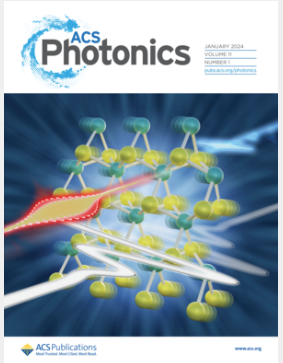Maneuverable Optical Selection of Multi-Branch Exciton-Polariton Modes in Disk-Shaped Perovskite Microcavities
IF 6.5
1区 物理与天体物理
Q1 MATERIALS SCIENCE, MULTIDISCIPLINARY
引用次数: 0
Abstract
Exciton-polaritons are composite bosonic quasiparticles formed by the strong coupling of photons and excitons, possessing a hybrid light-matter nature. Under certain conditions, they can achieve Bose–Einstein condensation at room temperature. Additionally, the information carried by photons leaking during their recombination process can be detected in real space. In this paper, halide perovskite materials are utilized within an optical microcavity to design a microdisk with a radius of 3 μm for confining exciton-polaritons. This approach achieves room-temperature condensation of exciton-polaritons in a perovskite crystal potential well and allows for the control of modes with symmetric petal-like shapes. We experimentally and theoretically demonstrate that controlling the relative position of the pump beam and the microdisk enables simultaneous switching of the angular and radial modes of exciton-polaritons, which manifest in real space as petal modes with different numbers of petals and layers. We have achieved the switching between the following modes: low-order petal modes with angular quantum numbers l = 1 and l = 2, characterized by single-orbit petal structures, and high-order petal modes with an angular quantum number l = 7, characterized by multiradial-node petal structures. Polaritons in these modes condense at multiple energy levels of the two lower branches. This study has important implications for the research and development of room-temperature exciton-polariton-based optical logic devices.

盘状钙钛矿微腔中多分支激子-极化子模式的可操作光学选择
激子-极化子是光子和激子强耦合形成的复合玻色子准粒子,具有光-物质混合性质。在一定条件下,它们可以在室温下实现玻色-爱因斯坦凝聚。此外,它们在重组过程中泄露的光子所携带的信息可以在现实空间中被探测到。本文在光学微腔内利用卤化物包晶材料设计了一个半径为 3 μm 的微盘,用于约束激子-极坐标子。这种方法实现了激子-极化子在过氧化物晶体势阱中的室温凝聚,并可控制具有对称花瓣状形状的模式。我们通过实验和理论证明,控制泵浦光束和微盘的相对位置可以同时切换激子-极化子的角度和径向模式,这些模式在现实空间中表现为具有不同花瓣数和层数的花瓣模式。我们实现了以下模式之间的切换:角量子数为 l = 1 和 l = 2 的低阶花瓣模式,其特征是单轨道花瓣结构;角量子数为 l = 7 的高阶花瓣模式,其特征是多轴节点花瓣结构。这些模式中的极化子在两个低分支的多个能级上凝聚。这项研究对研究和开发基于室温激子-极化子的光学逻辑器件具有重要意义。
本文章由计算机程序翻译,如有差异,请以英文原文为准。
求助全文
约1分钟内获得全文
求助全文
来源期刊

ACS Photonics
NANOSCIENCE & NANOTECHNOLOGY-MATERIALS SCIENCE, MULTIDISCIPLINARY
CiteScore
11.90
自引率
5.70%
发文量
438
审稿时长
2.3 months
期刊介绍:
Published as soon as accepted and summarized in monthly issues, ACS Photonics will publish Research Articles, Letters, Perspectives, and Reviews, to encompass the full scope of published research in this field.
 求助内容:
求助内容: 应助结果提醒方式:
应助结果提醒方式:


